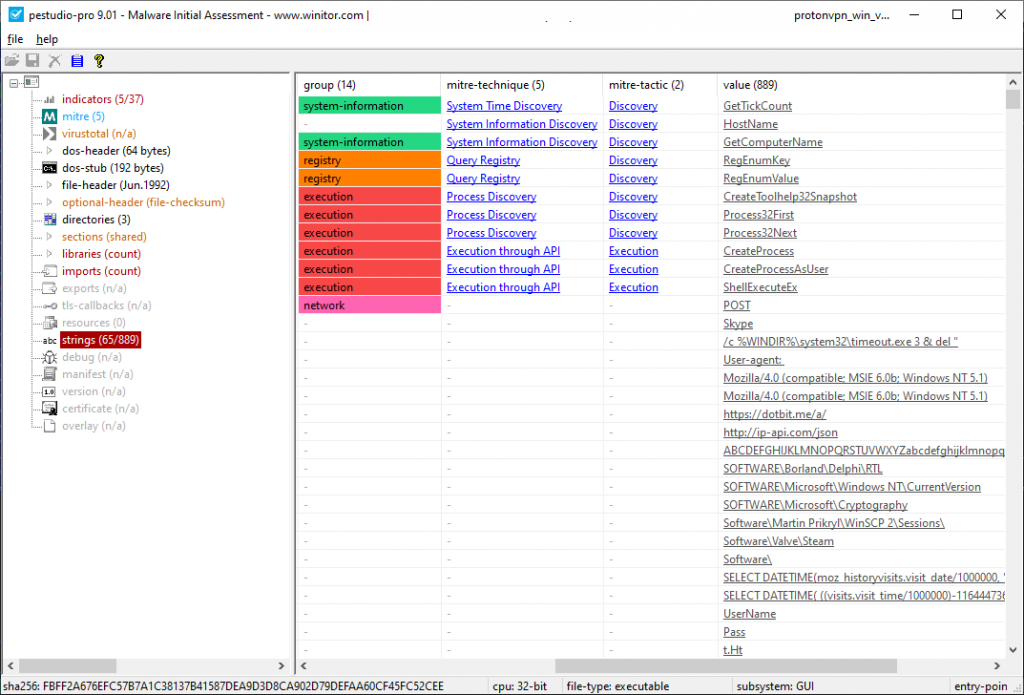Mcafee has released its Mobile Threat
Report for 2020 which analyses different
sources of attacks against smartphones.
These include the usual backdoors , trojan
horses, cryptojacking and many more.
However, one method which stands out is
the use of hidden apps to perform deceptive
functions, making up 50% of all malicious
activity.
This marks an astonishing 30% increase
from 2018 revealing that 2020 will also see
a continuing surge.
Data compiled by Mcafee.
According to the report, there are a
number of ways attackers employ to
successfully target users in line with
changing trends. Firstly, as smartphone
gaming has become more popular (stop
facepalming console gamers), it is not
surprising that someone will want to take
advantage of this.
How it’s done is that the bad guys spread
malicious app links in chat windows of
gaming messaging platforms and other
potential channels. Then even though the
app reflects the real one in terms of its
functionality, once the user downloads it, it
in actuality harvests user data and also
shows intruding ads.
A similar technique was exposed when
attackers were caught using STEAM chat to
spread malware and remote administration
tool ( RAT). In another attack, STEAM
accounts were compromised to spread
malicious links through its chat feature.
Secondly, a new malware named LeifAccess
(also known as Shopper) has been
discovered which misuses in-built
accessibility features of Android. It does so
by harassing users with fake warnings such
as “security error should be dealt with
immediately” and getting them to grant
access to these services which are then
used to perform a range of actions such as
creating third party accounts.
An example of one such threat
notification, image by Mcafee.
Furthermore, it posts fake reviews on the
Play Store in multiple languages in order to
make malicious apps appear more legitimate
which is somewhat unique. These are
though recognizable if one sees beyond just
the star ratings since the written reviews
are always comprised of generic phrases
such as “very simple and useful.”
Nonetheless, even if a user does not grant
access to accessibility services, it still
continues to install apps and does
malvertising. As also seen in previous
Android malware, Shopper also does not
have its own icon and hence makes it
difficult for victims to uninstall it.
An example of fake reviews
Thirdly, instead of creating and distributing
their own malicious app, we saw attackers
gaining access to legitimate apps and
misuse them for their own motives. These
include a range of South Korean apps in the
transit category infected with a “fake library
and plugin that could exfiltrate confidential
files called MalBus” as reported by Mcafee
in a press release. The data gained from
such a compromise include “bus stop
locations, route maps, and schedule times
for more than 5 years.”
To conclude, we’ve seen certain trends
grow over time out of which malicious apps
happen to be one. These as observed are
further divided into distinct categories
showing how complex these attacks have
gotten.
Therefore, to protect one’s self from these
attacks is no longer possible by only relying
on programs such as anti-virus . If attackers
are employing social engineering to trick us ,
it is vital that we respond by taking
precautions in real-time while using our
human intelligence.
An example specific to
this case is of vetting real app reviews from
automated fake ones as seen above.
Moreover, think – why are all of these
reviews similar in terms of their length and
also quite simple, far from what humans
would write? Something seems fishy and so
in this way, such attack vectors can be
successfully thwarted.
Furthermore, it is essential that users start
sticking to legitimate sources for
downloading their apps like Google Play
Store and avoid third-party app stores since
the majority of malicious apps can be found
in the latter.
Report for 2020 which analyses different
sources of attacks against smartphones.
These include the usual backdoors , trojan
horses, cryptojacking and many more.
However, one method which stands out is
the use of hidden apps to perform deceptive
functions, making up 50% of all malicious
activity.
This marks an astonishing 30% increase
from 2018 revealing that 2020 will also see
a continuing surge.
Data compiled by Mcafee.
According to the report, there are a
number of ways attackers employ to
successfully target users in line with
changing trends. Firstly, as smartphone
gaming has become more popular (stop
facepalming console gamers), it is not
surprising that someone will want to take
advantage of this.
How it’s done is that the bad guys spread
malicious app links in chat windows of
gaming messaging platforms and other
potential channels. Then even though the
app reflects the real one in terms of its
functionality, once the user downloads it, it
in actuality harvests user data and also
shows intruding ads.
A similar technique was exposed when
attackers were caught using STEAM chat to
spread malware and remote administration
tool ( RAT). In another attack, STEAM
accounts were compromised to spread
malicious links through its chat feature.
Secondly, a new malware named LeifAccess
(also known as Shopper) has been
discovered which misuses in-built
accessibility features of Android. It does so
by harassing users with fake warnings such
as “security error should be dealt with
immediately” and getting them to grant
access to these services which are then
used to perform a range of actions such as
creating third party accounts.
An example of one such threat
notification, image by Mcafee.
Furthermore, it posts fake reviews on the
Play Store in multiple languages in order to
make malicious apps appear more legitimate
which is somewhat unique. These are
though recognizable if one sees beyond just
the star ratings since the written reviews
are always comprised of generic phrases
such as “very simple and useful.”
Nonetheless, even if a user does not grant
access to accessibility services, it still
continues to install apps and does
malvertising. As also seen in previous
Android malware, Shopper also does not
have its own icon and hence makes it
difficult for victims to uninstall it.
An example of fake reviews
Thirdly, instead of creating and distributing
their own malicious app, we saw attackers
gaining access to legitimate apps and
misuse them for their own motives. These
include a range of South Korean apps in the
transit category infected with a “fake library
and plugin that could exfiltrate confidential
files called MalBus” as reported by Mcafee
in a press release. The data gained from
such a compromise include “bus stop
locations, route maps, and schedule times
for more than 5 years.”
To conclude, we’ve seen certain trends
grow over time out of which malicious apps
happen to be one. These as observed are
further divided into distinct categories
showing how complex these attacks have
gotten.
Therefore, to protect one’s self from these
attacks is no longer possible by only relying
on programs such as anti-virus . If attackers
are employing social engineering to trick us ,
it is vital that we respond by taking
precautions in real-time while using our
human intelligence.
An example specific to
this case is of vetting real app reviews from
automated fake ones as seen above.
Moreover, think – why are all of these
reviews similar in terms of their length and
also quite simple, far from what humans
would write? Something seems fishy and so
in this way, such attack vectors can be
successfully thwarted.
Furthermore, it is essential that users start
sticking to legitimate sources for
downloading their apps like Google Play
Store and avoid third-party app stores since
the majority of malicious apps can be found
in the latter.
















